Abstract
The infectivity of Actinomyces israelii in a susceptible-weanling-mouse was increased by the presence of Eikenella corrodens in the inoculum. A minimal infecting dose of 1.7 X 10(7) CFU of A. israelii was required to establish chronic lesions after an intraperitoneal injection. When E. corrodens (3.8 X 10(7) CFU) was included in the inoculum, chronic lesions were established with a dose of 8.5 X 10(4) CFU of A. israelii. E. corrodens alone did not produce persistent lesions. Viable E. corrodens could be recovered from chronic mixed actinomycotic lesions in numbers that often equaled or exceeded the populations of A. israelii in the lesions. The duration of acute actinomycotic infections caused by A. viscosus was temporarily extended by the presence of E. corrodens. The cellular inflammatory response and overall morphology of mixed experimental lesions containing A. israelii and E. corrodens did not appear to be significantly different from those of pure-culture lesions containing A. israelii alone. E. corrodens cells could not be readily discerned in stained histological sections of mixed experimental lesions.
Full text
PDF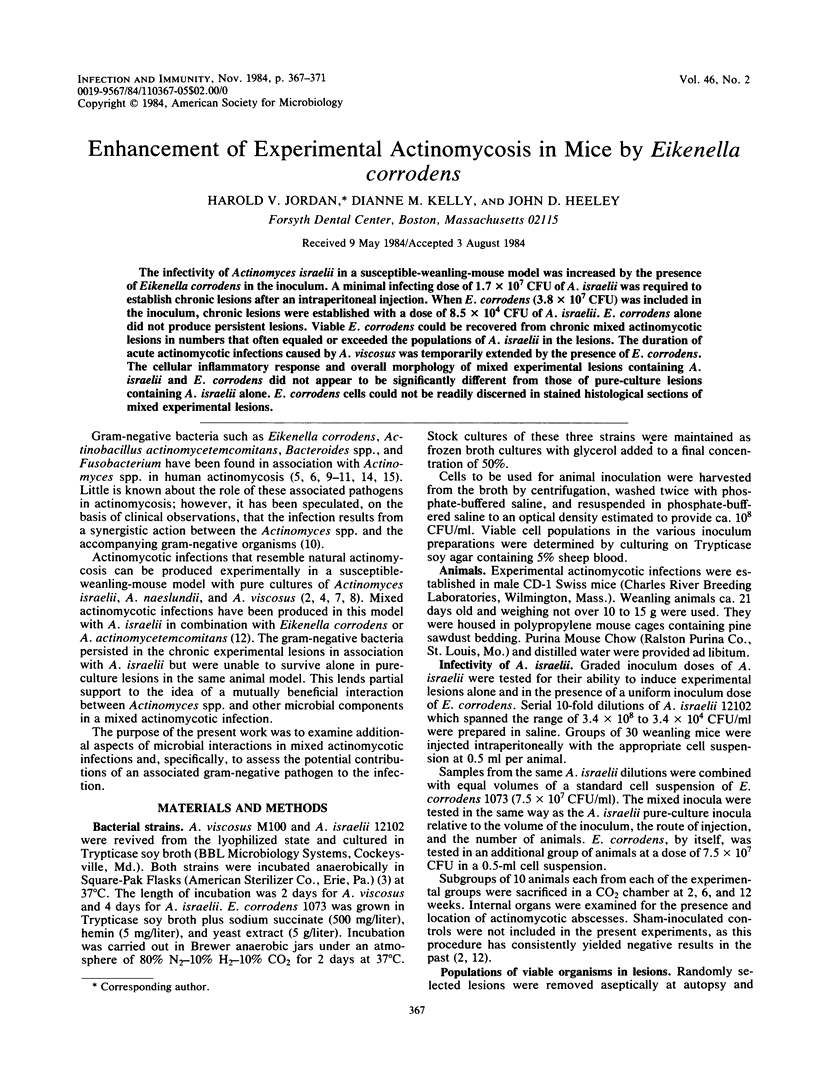
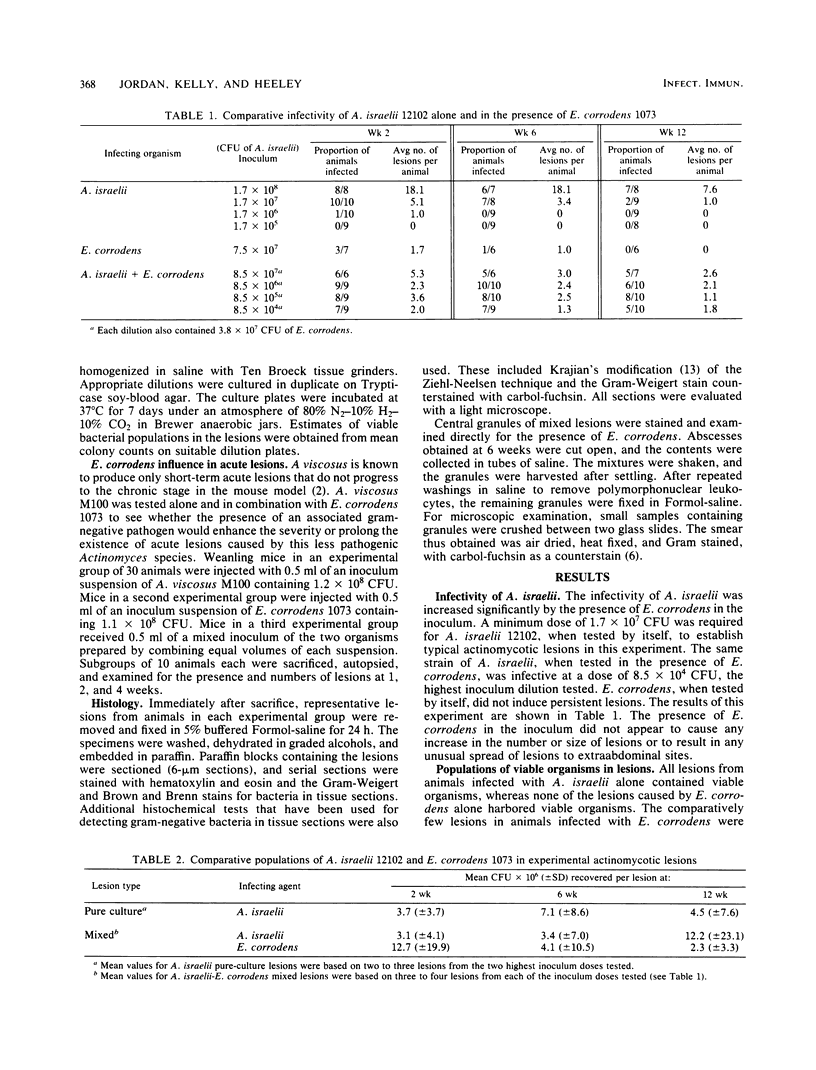
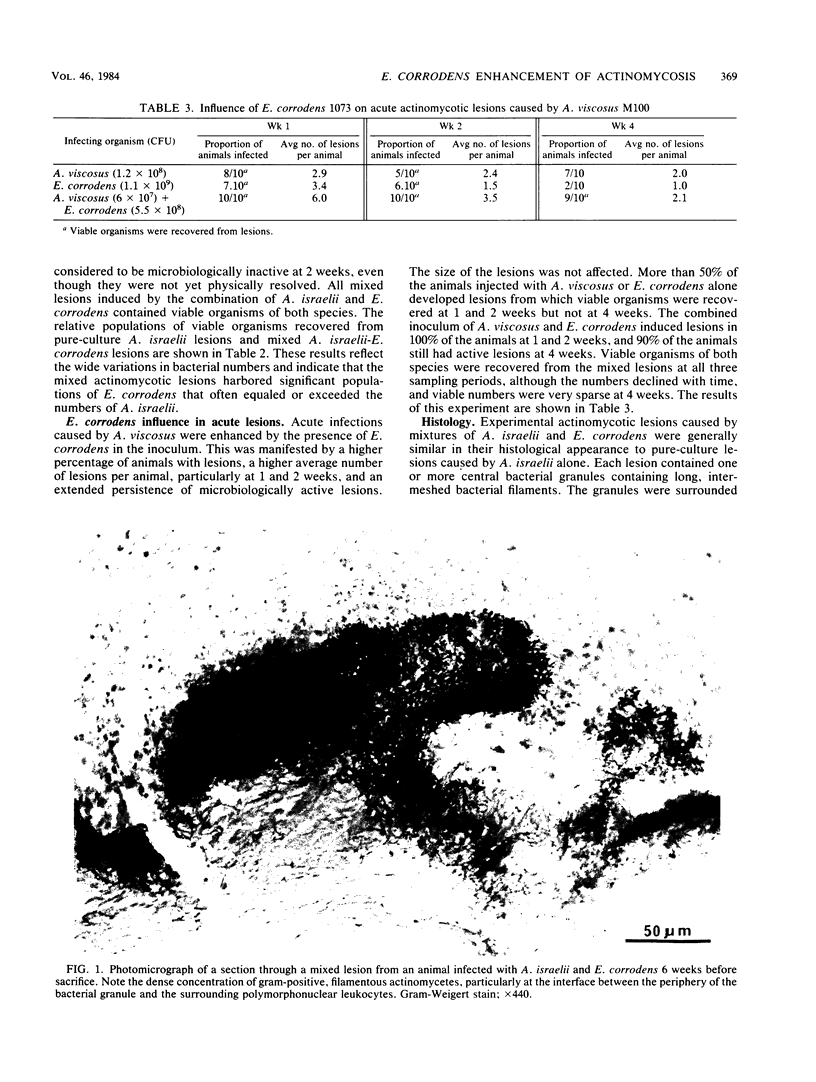
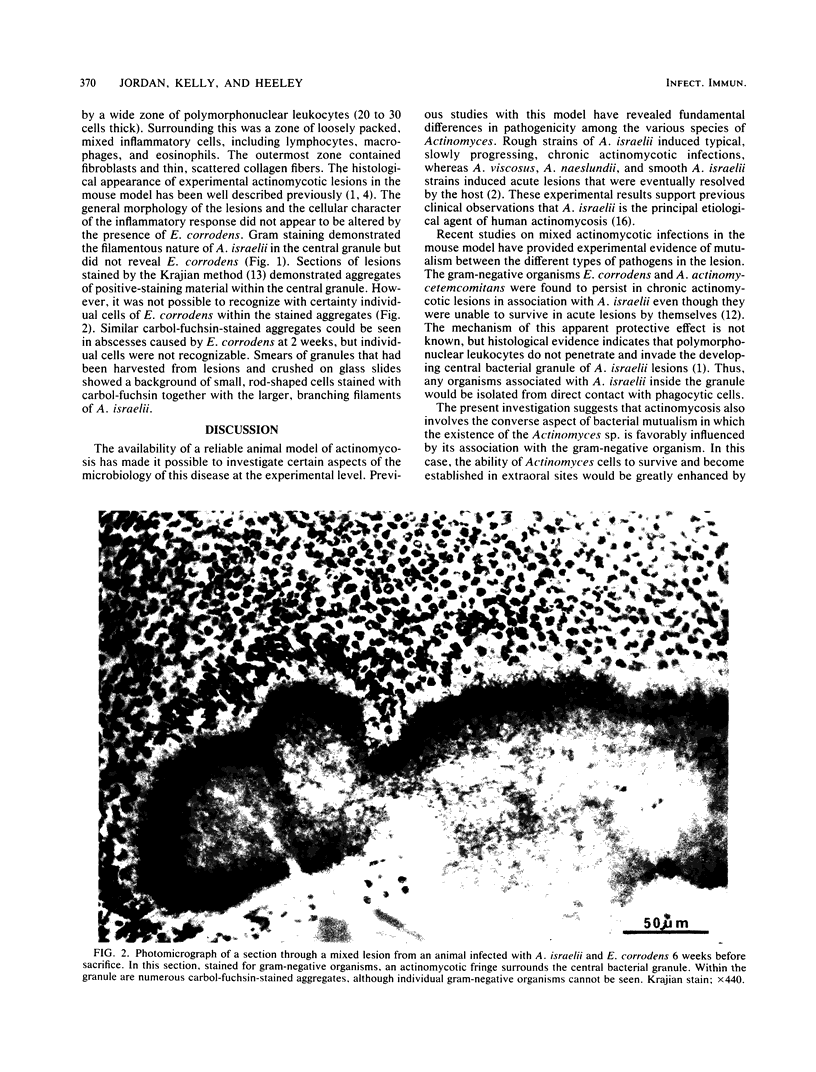
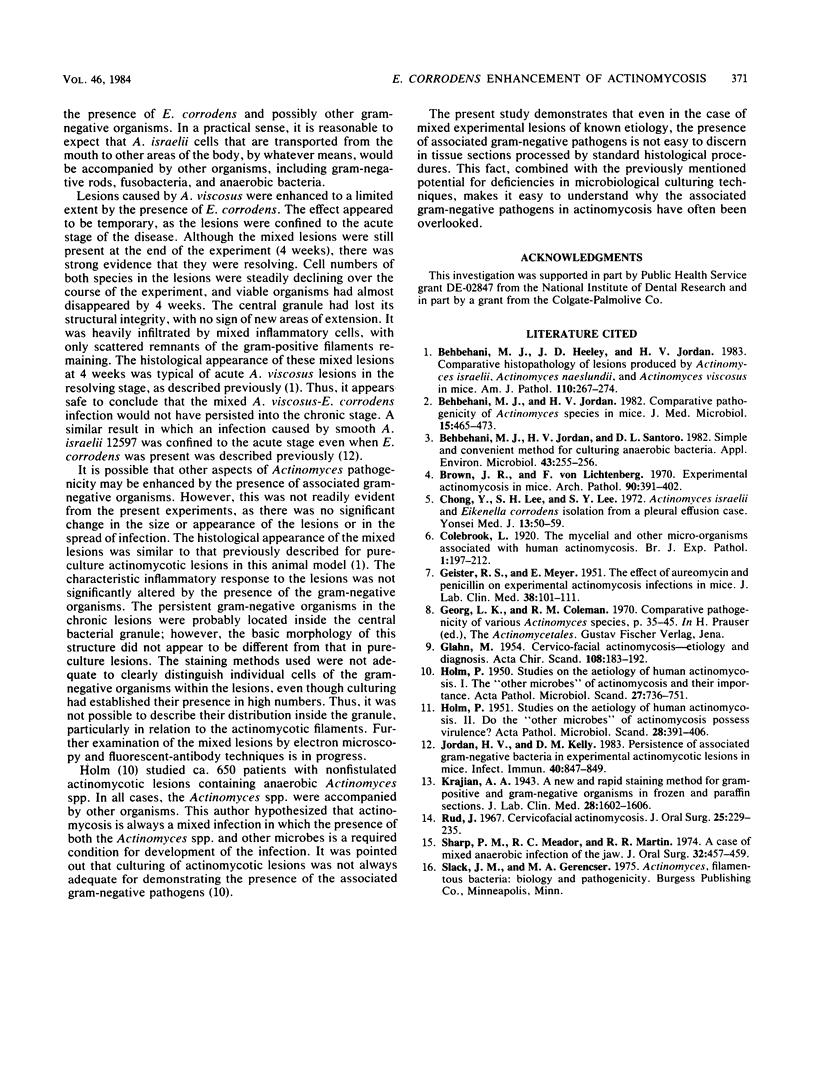
Images in this article
Selected References
These references are in PubMed. This may not be the complete list of references from this article.
- Behbehani M. J., Heeley J. D., Jordan H. V. Comparative histopathology of lesions produced by Actinomyces israelii, Actinomyces naeslundii, and Actinomyces viscosus in mice. Am J Pathol. 1983 Mar;110(3):267–274. [PMC free article] [PubMed] [Google Scholar]
- Behbehani M. J., Jordan H. V. Comparative pathogenicity of Actinomyces species in mice. J Med Microbiol. 1982 Nov;15(4):465–473. doi: 10.1099/00222615-15-4-465. [DOI] [PubMed] [Google Scholar]
- Behbehani M. J., Jordan H. V., Santoro D. L. Simple and convenient method for culturing anaerobic bacteria. Appl Environ Microbiol. 1982 Jan;43(1):255–256. doi: 10.1128/aem.43.1.255-256.1982. [DOI] [PMC free article] [PubMed] [Google Scholar]
- Brown J. R., Von Lichtenberg F. Experimental actinomycosis in mice. Study of pathogenesis. Arch Pathol. 1970 Nov;90(5):391–402. [PubMed] [Google Scholar]
- Chong Y., Lee S. H., Lee S. Y. Actinomyces israelii and Eikenella corrodens isolation from a pleural effusion case. Yonsei Med J. 1972;13:50–59. doi: 10.3349/ymj.1972.13.1.50. [DOI] [PubMed] [Google Scholar]
- GEISTER R. S., MEYER E. The effect of aureomycin and penicillin on experimental actinomycosis infections in mice. J Lab Clin Med. 1951 Jul;38(1):101–111. [PubMed] [Google Scholar]
- GLAHN M. Cervico-facial actinomycosis; etiology and diagnosis. Acta Chir Scand. 1954 Nov 20;108(2-3):183–192. [PubMed] [Google Scholar]
- HOLM P. Studies on the aetiology of human actinomycosis. II. Do the other microbes of actinomycosis possess virulence? Acta Pathol Microbiol Scand. 1951;28(4):391–406. doi: 10.1111/j.1699-0463.1951.tb03705.x. [DOI] [PubMed] [Google Scholar]
- Jordan H. V., Kelly D. M. Persistence of associated gram-negative bacteria in experimental actinomycotic lesions in mice. Infect Immun. 1983 May;40(2):847–849. doi: 10.1128/iai.40.2.847-849.1983. [DOI] [PMC free article] [PubMed] [Google Scholar]
- Rud J. Cervicofacial actinomycosis. J Oral Surg. 1967 May;25(3):229–235. [PubMed] [Google Scholar]
- Sharp P. M., Meador R. C., Martin R. R. A case of mixed anaerobic infection of the jaw. J Oral Surg. 1974 Jun;32(6):457–459. [PubMed] [Google Scholar]




